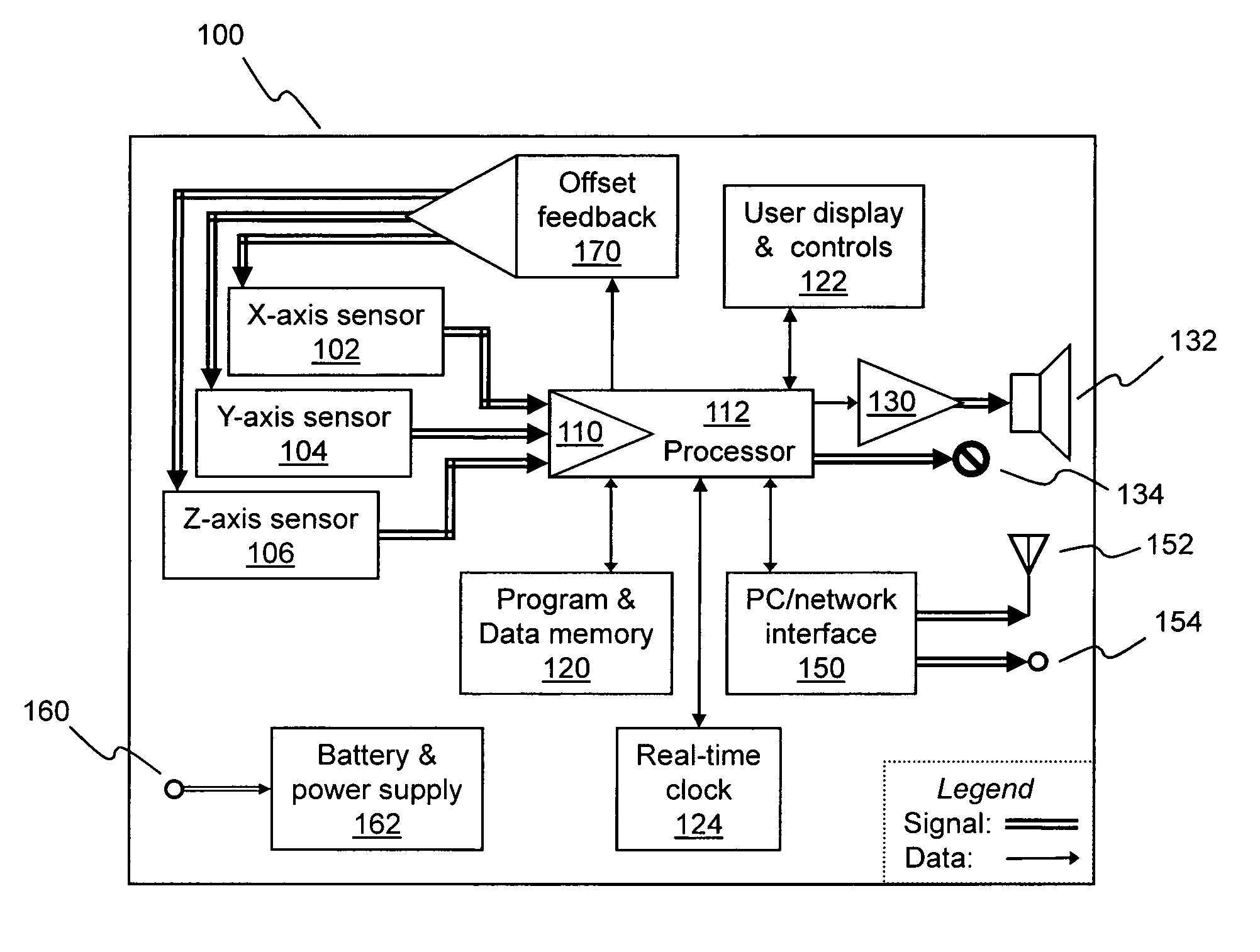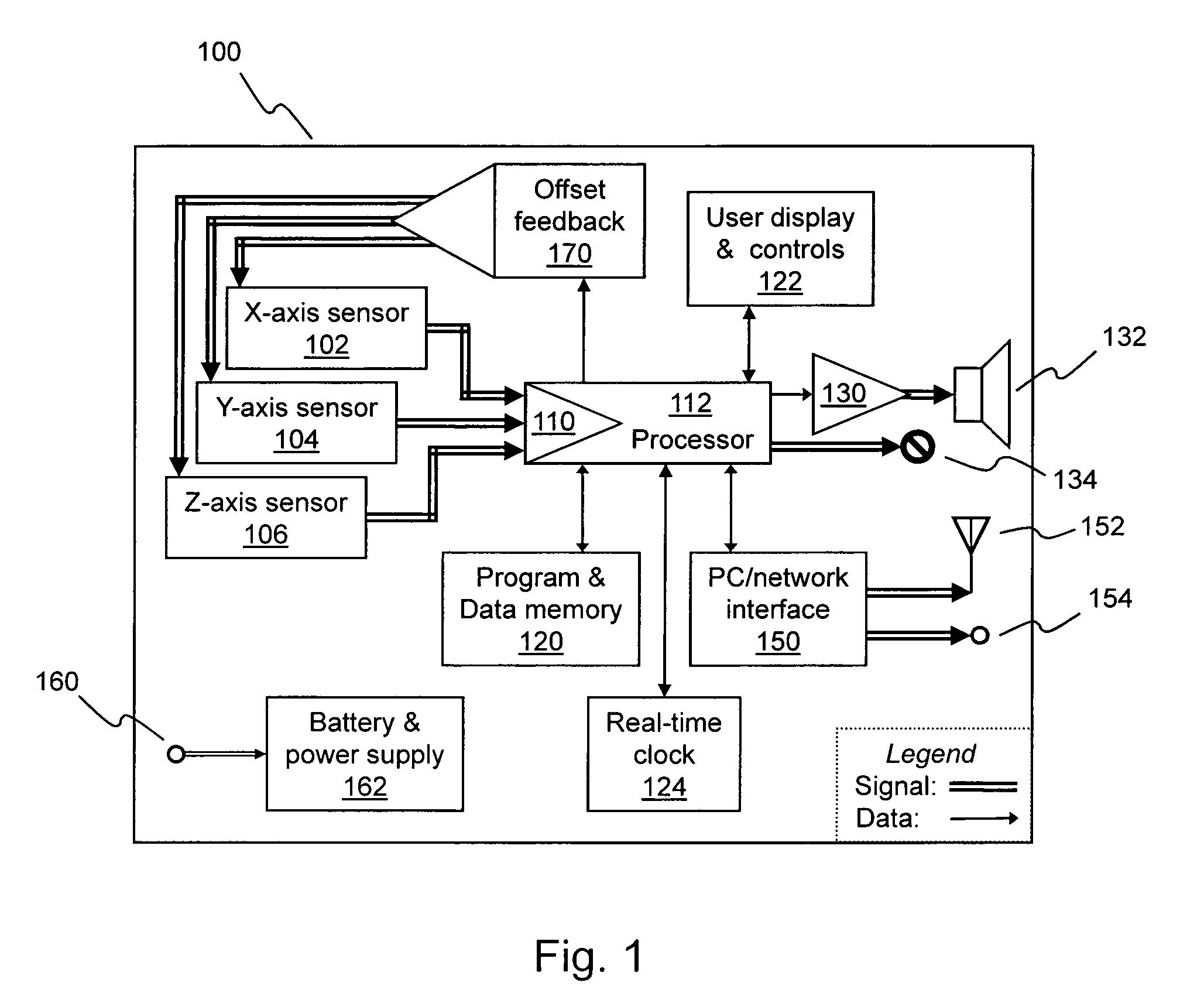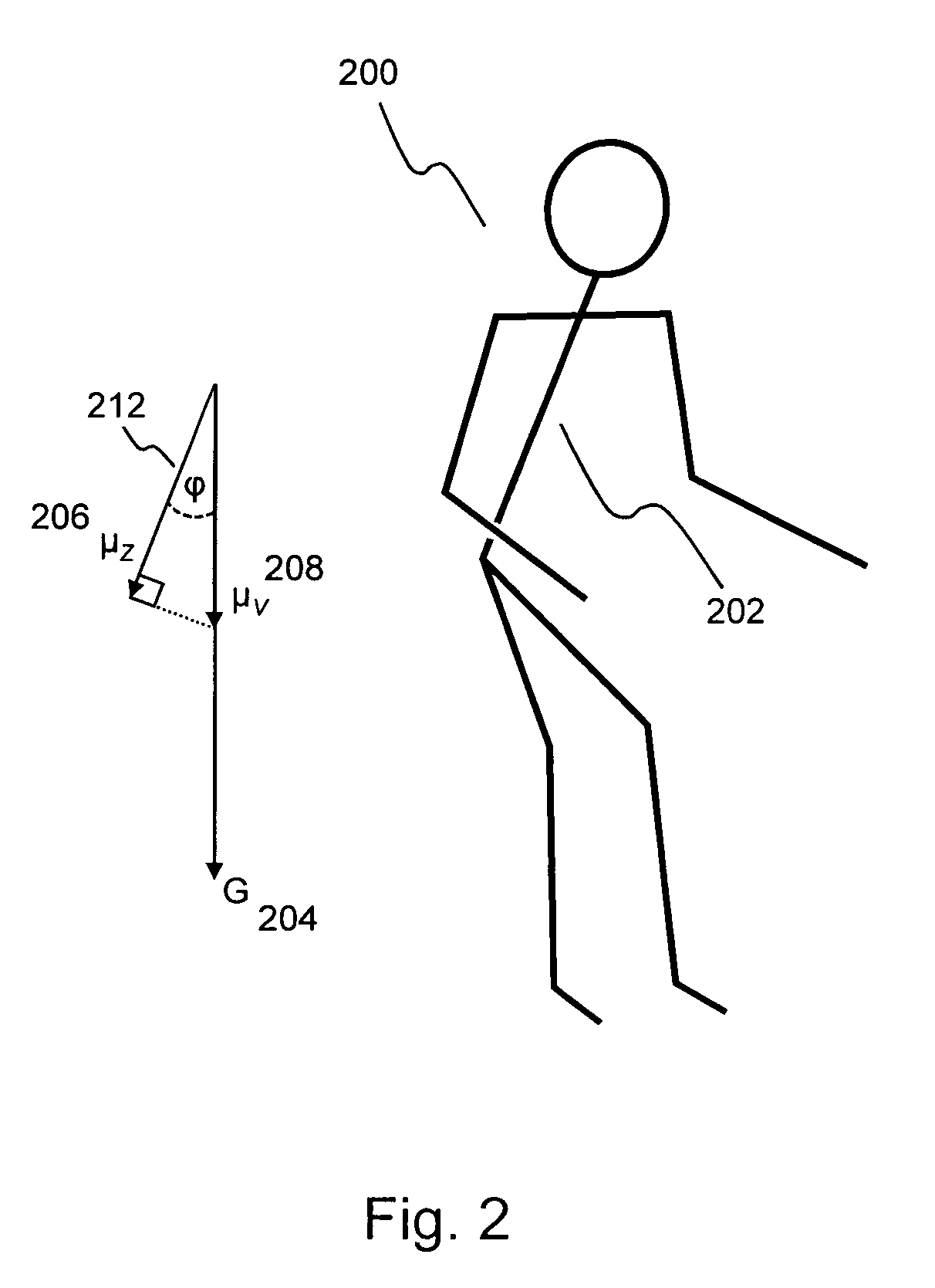Newtonian physical activity monitor
a technology of physical activity and monitor, applied in the field of physical activity monitoring, can solve the problems of inability to accurately suppress gravity signals, existing systems that do not monitor both the intensity of physical activity of the user and his/her posture, and difficulty in accurately separating strong and weak signals, so as to achieve accurate determination of type and intensity.
- Summary
- Abstract
- Description
- Claims
- Application Information
AI Technical Summary
Benefits of technology
Problems solved by technology
Method used
Image
Examples
Embodiment Construction
[0039]The disclosures of U.S. Provisional Patent Application No. 60 / 930,749 filed May 18, 2007 entitled PHYSICAL ACTIVITY MONITOR, U.S. Provisional Patent Application No. 60 / 934,216 filed Jun. 11, 2007 entitled PHYSICAL ACTIVITY AND POSTURE MONITOR, and U.S. Provisional Patent Application No. 60 / 936,117 filed Jun. 18, 2007 entitled PHYSICAL ACTIVITY AND POSTURE MONITOR, are incorporated herein by reference in their entirety.
[0040]The definitions below are provided for purposes of illustration, not limitation, in order to assist with understanding the discussion that follows.
[0041]Activity type: “Activity type” is a qualitative description of physical activity, e.g., walking, running, swimming, vacuuming floors, washing dishes, climbing stairs, etc.
[0042]Energy Expenditure: “Energy Expenditure (EE)” is a measure of the amount of energy that is expended during the physical effort required to perform an activity. For example, EE can be expressed in footsteps (an inaccurate measure), ca...
PUM
 Login to View More
Login to View More Abstract
Description
Claims
Application Information
 Login to View More
Login to View More - R&D
- Intellectual Property
- Life Sciences
- Materials
- Tech Scout
- Unparalleled Data Quality
- Higher Quality Content
- 60% Fewer Hallucinations
Browse by: Latest US Patents, China's latest patents, Technical Efficacy Thesaurus, Application Domain, Technology Topic, Popular Technical Reports.
© 2025 PatSnap. All rights reserved.Legal|Privacy policy|Modern Slavery Act Transparency Statement|Sitemap|About US| Contact US: help@patsnap.com



